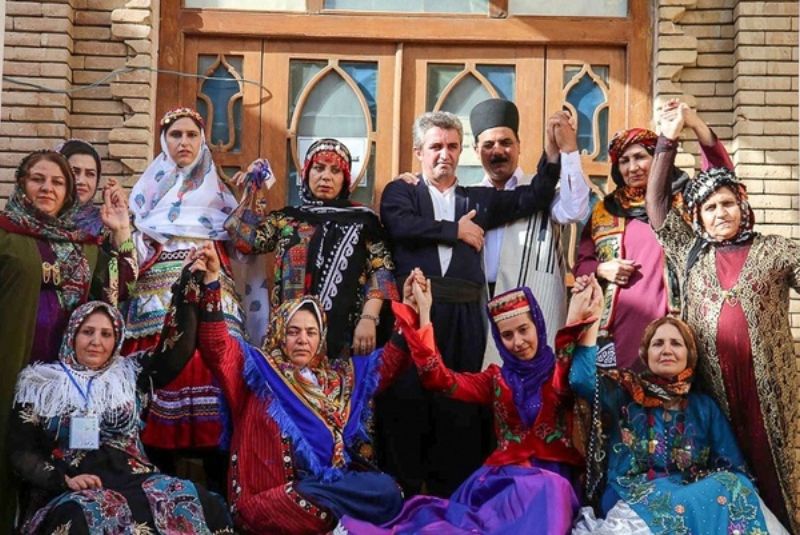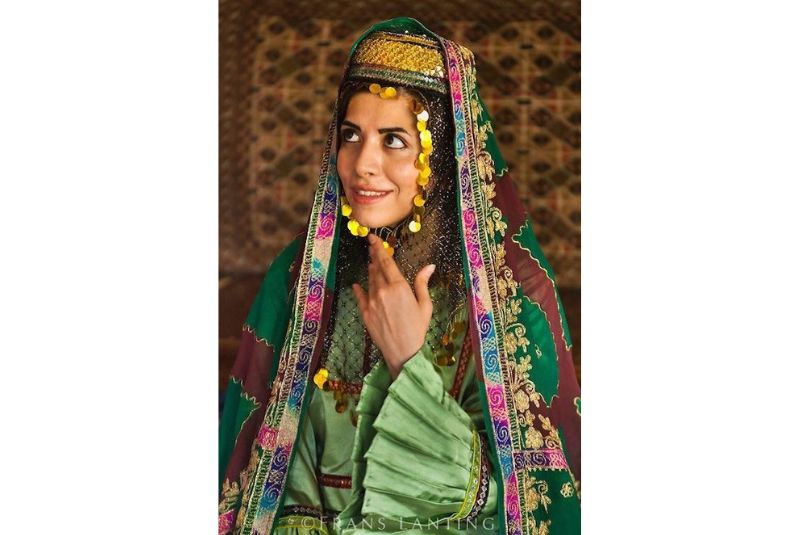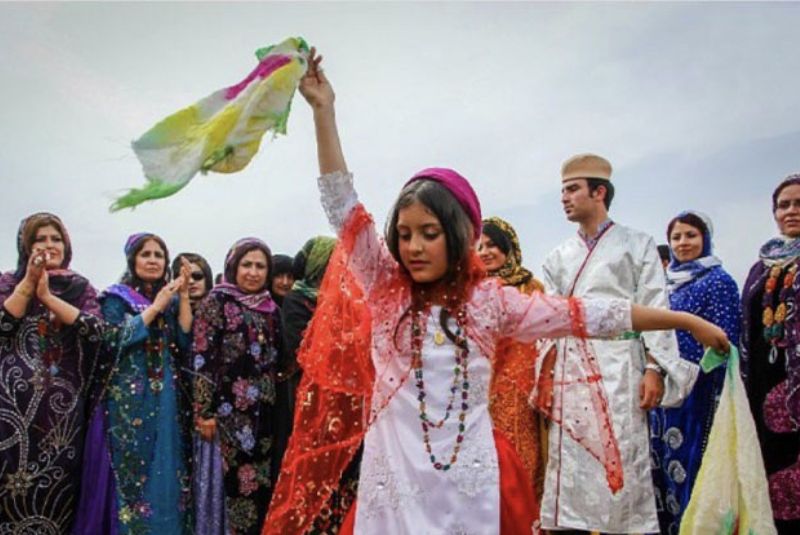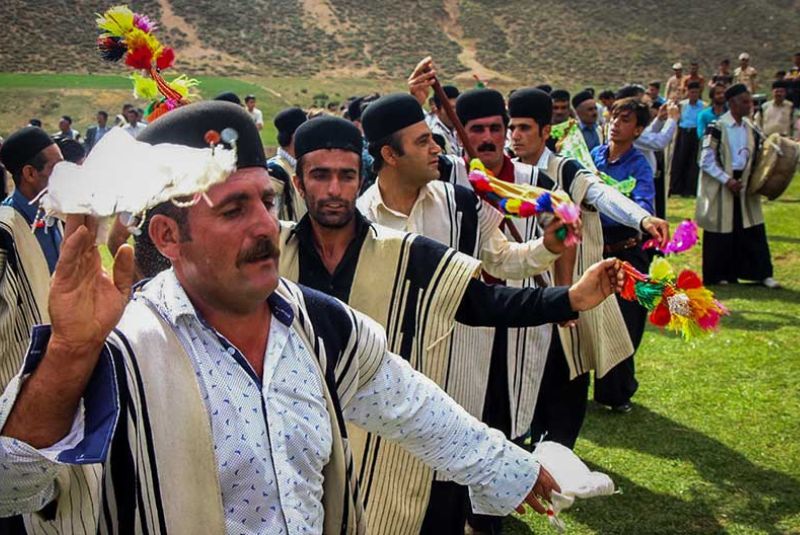Iranian Lurs Ethnic | The Lurs of Iran
The Iranian Lurs Ethnic group, distinguished by their unique cultural identity and historical significance, forms a vibrant tapestry within the rich mosaic of Iranian diversity.
Hailing from the mountainous regions of Western Iran, the Iranian Lurs Ethnic have cultivated a rich heritage, characterized by distinctive traditions, folklore, and linguistic nuances. Their contributions to Iran's cultural landscape, encompassing art, music, and folklore, are invaluable threads in the nation's cultural fabric.
Preserving and promoting the cultural heritage of the Iranian Lurs Ethnic is not only an homage to their storied past but also a celebration of the diversity that defines Iran. As the custodians of unique traditions and narratives, the imperative to safeguard and showcase their cultural wealth becomes paramount. Through understanding and appreciating the Iranian Lurs Ethnic's heritage, we not only honor their legacy but also contribute to the dynamic narrative of Iranian culture, fostering a deeper appreciation for the multifaceted tapestry that is Iran.
History and Origins of Iranian Lurs Ethnic

The Iranian Lurs, an integral part of the nation's rich cultural mosaic, trace their origins to the mountainous landscapes of Western Iran. Often pondered is the question, "Are Lurs Persian?" The Lurs, while ethnically distinct, share historical and cultural ties with the broader Persian identity. Their contributions to Iranian culture are profound, creating a tapestry woven with unique threads of artistry, folklore, and linguistic nuances.
Distinguishing the Lurs from their neighbors, it's crucial to address the differences between Lurs and Kurds. Despite some linguistic and cultural similarities, these ethnic groups maintain distinct identities. The Lur people, with their intricate handicrafts, textiles, and pottery, contribute uniquely to the Iranian cultural tapestry. However, the word "Kurd" meant a herdsman, and its meaning is also used for Lur tribes.
The term "Lur" carries significant historical weight. Often associated with the ancient Elamite civilization, the Lurs have evolved with distinct characteristics, shaping their cultural identity over millennia. The very meaning of "Lur" resonates with resilience and cultural pride, embodying the essence of a people deeply rooted in the Iranian landscape.
| Related: Iran Ethnic Groups - Language, Traditions, and Culture
Language and Traditions of Iranian Lurs Ethnic

At the heart of the Iranian Lurs Ethnic identity is the Luri language, a significant aspect of their cultural heritage. Luri, belonging to the southwestern branch of the Iranian languages, is spoken by Lurs across various regions in Western Iran. Its distinct linguistic characteristics set it apart, contributing to the rich linguistic diversity within the nation. Preserving and promoting the Luri language is vital not only for the Iranian Lurs but also for the broader understanding and appreciation of Iran's linguistic mosaic.
The Lurs boast a tapestry of unique traditions, customs, and folklore that form the cultural bedrock of their identity. Among their distinctive traditions is the vibrant and colorful attire worn during celebrations and ceremonies. These garments, adorned with intricate embroidery and patterns, reflect the artistry and craftsmanship of the Lurs. Traditional Luri music, featuring melodic instruments and rhythmic beats, adds an auditory dimension to their cultural expressions.
Folklore holds a special place in Luri culture, with myths, legends, and storytelling passed down through generations. These narratives often depict the historical and cultural experiences of the Lurs, offering insights into their worldview. The oral tradition of storytelling is a powerful means through which the Lurs transmit their history, values, and moral lessons.
Lurs celebrate various festivals, marked by lively gatherings that include traditional dances, music, and feasts. These festivals not only serve as occasions for joy and camaraderie but also provide a platform for the continuation of age-old customs. The Nowruz festival, marking the Iranian New Year, is particularly significant, symbolizing renewal, hope, and cultural continuity.
Arts and Crafts of Iranian Lurs Ethnic

The Iranian Lurs Ethnic group is the custodian of a rich artistic heritage, expressed through traditional art forms that resonate with cultural vibrancy. Luri music, characterized by its distinctive melodies and rhythmic beats, holds a special place in the community's heart. Instruments like the tanbur and dotar accompany traditional Luri songs, creating an auditory experience that mirrors the cultural richness of the region.
Luri dance, a captivating blend of movement and expression, further amplifies the artistic traditions of the Iranian Lurs. These dances, often performed during celebrations and festivals, are a testament to the community's deep connection with their cultural roots. The graceful twirls and intricate footwork reflect the joyous spirit of the Lurs and add a dynamic dimension to their cultural expressions.
Handicrafts play a significant role in Luri artistry, with artisans creating exquisite textiles, carpets, and pottery. The intricate patterns and vibrant colors of Luri handicrafts are not only aesthetically pleasing but also narrate stories of tradition, skill, and cultural pride. These artisanal creations are tangible expressions of the Lurs' artistic ingenuity, weaving together heritage and craftsmanship.
The influence of traditional Luri art forms extends beyond the confines of the community, shaping contemporary Iranian art and culture. Luri music, with its evocative tunes, has contributed to the broader Iranian musical landscape, influencing modern compositions. Additionally, the intricate designs and motifs found in Luri handicrafts continue to inspire contemporary Iranian artists, fostering a dynamic dialogue between tradition and innovation.
Cuisine and Culinary Traditions of Iranian Lurs Ethnic

The Lurs' culinary artistry is deeply rooted in the local ingredients of the mountainous terrain of Western Iran, resulting in a distinctive and delectable cuisine.
Popular Luri dishes showcase a harmonious blend of herbs, and grains, creating a symphony of flavors. "Ash-e Tarkhineh", a kind of soup whose main ingredient is curd and wheat flour along with mountain vegetables, exemplifies the rich and nutritious nature of Luri cooking. Another iconic dish is "Dande Kabab," skewered meat cooked over an open flame, a testament to the community's affinity for succulent grilled meats.
Herbs and spices, such as mountain vegetables, and turmeric, play a pivotal role in Luri cuisine, infusing dishes with a tantalizing depth of flavor. Flatbreads, a staple in Luri meals, are often baked at home and served with various accompaniments.
Luri culinary traditions also celebrate dairy products, with yogurt and buttermilk frequently incorporated into dishes for a creamy and tangy contrast. Additionally, grains like rice and barley form the foundation of many Luri recipes, offering a wholesome and satisfying base.
Cooking methods in Luri cuisine often involve slow simmering, allowing flavors to meld and intensify. Grilling, whether over an open flame or on hot stones, imparts a distinctive smokiness to meats, creating a sensory experience that resonates with the rugged landscapes of the Lur region.
| Read more: Persian Food - The Best in the Whole World
Festivals and Celebrations of Iranian Lurs Ethnic

Major festivals and celebrations play a pivotal role in preserving and celebrating Lurs unique cultural identity. One such significant event is the Nowruz festival, marking the Iranian New Year. Nowruz heralds the arrival of spring and is observed with joyous gatherings, feasts, and rituals. Families come together to prepare the traditional Haft-Seen table, adorned with symbolic items representing renewal, growth, and prosperity.
Another noteworthy celebration is Yalda Night, the winter solstice. Lurs commemorate this longest night of the year with vibrant festivities, feasting on seasonal fruits, nuts, and sweet delicacies. The warmth of familial bonds and the symbolism of overcoming darkness contribute to the spiritual significance of Yalda Night.

Luri weddings are grand affairs, embodying a rich cultural tapestry with traditional music, dance, and elaborate ceremonies. These celebrations are not only joyous occasions for the newlyweds but also serve as communal events, reinforcing the social fabric of the Lur community.
These festivals and celebrations hold immense significance in preserving the cultural identity of the Iranian Lurs. They serve as moments of cultural continuity, where rituals and traditions are passed down through generations. The communal nature of these events fosters a sense of belonging and reinforces the bonds that tie the Lur people to their heritage.
| Related: Iranian Festivals and Celebrations
Tourism Opportunities

For those seeking a unique and enriching cultural experience, delving into the vibrant world of Luri culture offers a distinctive opportunity for immersive tourism. The mountainous landscapes of Western Iran, home to the Iranian Lurs, present a picturesque backdrop for travelers eager to explore the heart of this ethnic community. Cultural tourism can be tailored to showcase Luri traditions through guided visits to local festivals, providing an authentic glimpse into the rhythms of Luri life.
Visitors can partake in traditional celebrations such as Nowruz and Yalda Night, engaging with locals in joyous festivities that embody the essence of Luri culture. Furthermore, guided tours to artisan workshops, where traditional crafts like intricate carpet weaving and pottery take center stage, offer an intimate understanding of Luri artistic expressions.
Local culinary experiences, featuring the savory delights of Luri cuisine, can be curated for food enthusiasts. Exploring the unique flavors and cooking methods that define Luri gastronomy adds a delightful dimension to the cultural immersion. Through thoughtful tourism initiatives, visitors can forge connections with the Iranian Lurs, contributing to the preservation of their heritage while creating lasting memories of an authentic and enriching travel experience.
Finally!
The Iranian Lurs Ethnic group encapsulates a rich cultural tapestry that weaves together distinctive traditions, artistic expressions, and a profound connection to the land they call home. From the intricate handicrafts to the haunting melodies of their music, the Lurs have contributed unique threads to Iran's diverse cultural fabric. Their festivals stand as vibrant celebrations embodying the resilience and cultural pride embedded in the Iranian Lurs Ethnic.
As tourism emerges as a bridge between cultures, it plays a pivotal role in preserving the heritage of the Iranian Lurs Ethnic. Visitors, drawn to the picturesque landscapes and immersive experiences, become advocates for cultural understanding. The positive impact of tourism extends beyond economic benefits, fostering awareness and appreciation for the Lurs' way of life. Through responsible and respectful tourism practices, we not only celebrate the Iranian Lurs Ethnic's heritage but actively participate in its preservation, ensuring that the rich tapestry of their cultural legacy thrives for generations to come.
Share your story!
Comment below and let us know about your Experience.
Your story inspires others!


Comment
Leave a Comment